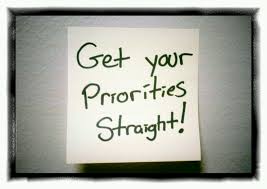
Estimating your project is the key to figure out how many resources a project needs in order to complete successfully. But estimates are also the key to measure whether everything goes as planned.
The estimate will give the steering committee or a potential client the ability to judge whether a project is worth implementing or not. In addition, if estimates are given to specific user demands (aka userstories), then the product owner/client/customer can make a judgment of whether a specific demand will give enough value to justify the expenses.
Doing estimates, both rough in the start of a project and detailed estimates later on, will give the ability to prove that the project is doing progress, if your estimates are over or under your budgets, if your deadline and milestones can be meet and so forth. There are various ways of doing this and numerous tools that can help you do it.
How to estimate?
There are two ways that I find especially useful when estimating tasks. One is by using hours and days and the other is by using points and complexity.
If estimates are done in hours or days, then the team members probably will have to breakdown the task and give their estimate on the tasks by telling the SCRUM master or project manager how many hours they would need to complete a subtask. Then adding up all the estimates will give the estimate for the entire userstory and then the estimate for the entire project.
However, breaking down every userstory before being able to give an estimate for an entire project might in some cases be too big a task to make sense (you don’t wanna spent weeks estimating a project that the customer don’t want you to do. In that case you can estimate the userstories by given them points or by rating their complexity. Once that is done, you can breakdown and estimate 2 – 4 userstories in each category, find the average time estimated for a complexity and then sum them all up.
An example.
You have 500 userstories in your project. You go through each userstory and give them points on the following in scale
- 0 Points (No work needed)
- 5 points (Being the simplest)
- 20 points
- 50 points
- 100 points
- Over 100 points
Once that is done, you will need to pick 4 userstories from each scale, break them down and estimate them thoroughly. Afterwards you will need to find the average of the estimates given for each scale and then multiply that amount of hours by the number of userstories in that complexity category. Once that is done, you can add up all the hours from each scale and you will have a descent idea about the resources you will need in order to finish your project.
Always follow up
You should always follow up on your estimates to see if they hold – Usually they do not, so beware of this. When you can see a trend in your estimates, you should try to figure out how much they deviate, and make sure to adjust the estimates for the rest of the backlog.
Once you do recognize that your estimates are off, you should recalculate the entire budget for the project. E.g. If all the tasks you complete has a 30% higher use of hours spent than what they was estimated for, then you should adjust your estimates accordingly by adding 30% to the remaining backlog, and then make sure to report your new budget to your steering committee and/or product owner and customer.
